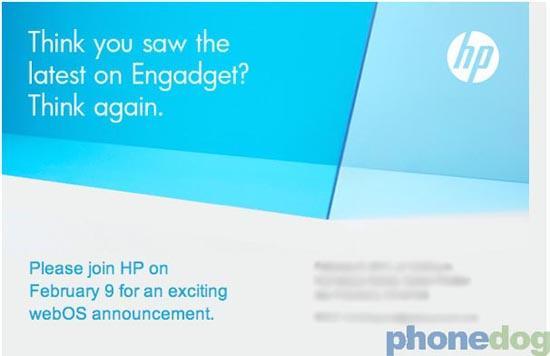
As the rumors of webOS tablets (PalmPad, TouchPad, Opal, Topaz, etc.) first began, I was somewhat skeptical about how the device would fare among the relentless competition like the XOOM, various other Android tablets, the iPad 2, and even the BlackBerry PlayBook. While all of these competitors are still daunting, HP and Palm seem to have stepped up their game. The lackluster hardware of their first generation of webOS smartphones somewhat dampened my faith in them, but the recent specifications and render leak has turned the tide. Based on the more recent leaks, will a webOS tablet sell?
So what exactly are the rumored specs? A 9.7-inch display (1024 by 768 pixel resolution); 1.2 GHz dual-core Qualcomm MSM8660 processor; Adreno 220 GPU, and 512 MB RAM; either 16, 32, or 64 GB of storage; and 1.3 MP front-facing camera. In addition to some respectable hardware specs, it is said to have “tens of gigabytes” of cloud storage, phone-to-tablet communication, Touchstone (v2) compatibility, and several other wireless features.
Until last week, everything about the webOS tablet was pure speculation. That doesn't mean these specifications are 100% correct, but HP responded to the render leak by saying, “Think you saw the latest on Engadget? Think again.” It makes me wonder what it is the company has up their sleeve.

The one caveat of webOS remains in its application catalog. Sitting just over 5,000 applications, it leaves room for growth and could leave many customers wanting more or leaning toward Android or an iPad. To be honest though, I rarely use applications on my tablet. That doesn't mean I don't take it to the couch for a game of Scrabble or watch Netflix on it when I'm out of town. Aside from Pandora, I mainly use my iPad for taking notes, browsing the Internet, and knocking out emails. So in terms of tablets, the lack of hundreds of thousands of applications on webOS may not be an Achilles' heel.
What may end up hurting the sales of the webOS tablet more than anything is time. This tablet rush is expected to hit in the next few months (March/April/May), where we should see several Android tablets, possibly the iPad 2, and the PlayBook. Holding out for a webOS tablet may prove hard to do for those impatient customers. The Opal tablet is rumored to launch in September; that could be four months too late. There really haven't been any solid dates on the Topaz, but if it launches in the same time frame as the Opal is rumored, it could be doomed from the start, too. Hopefully HP and Palm plan to announce more promising release dates on the 9th.

Offering up features like “true multitasking,” advanced gestures (two-finger swiping and tapping), and a beautiful and sleek user interface, the webOS tablet is competitive with software alone. Add a 1.2 GHz dual-core processor and ample cloud computing abilities, and this tablet may have just what it takes to stand out among the endless line of Android tablets and current tablet king. With HP's response to the render of the device, I'm driven to believe it looks somewhat different that the picture above. I'm genuinely excited to see what the device actually looks like.
These are all rumors, so we have to take them as just that. But a man can dream, right? Let's hope for HPalm's sake that these specifications are real or at least close to the actual specs. Thankfully, we only have to wait until February 9th for Palm and HP get on stage in San Fran and give up some answers. What say you? Will you buy an HP/Palm webOS tablet? Or are your sights set on Android, BlackBerry, or Apple?